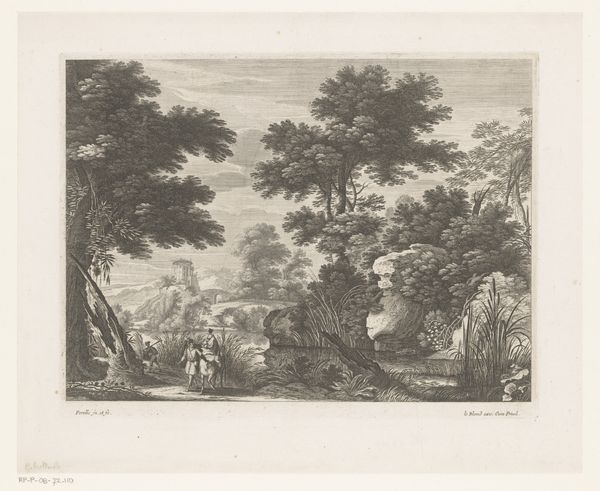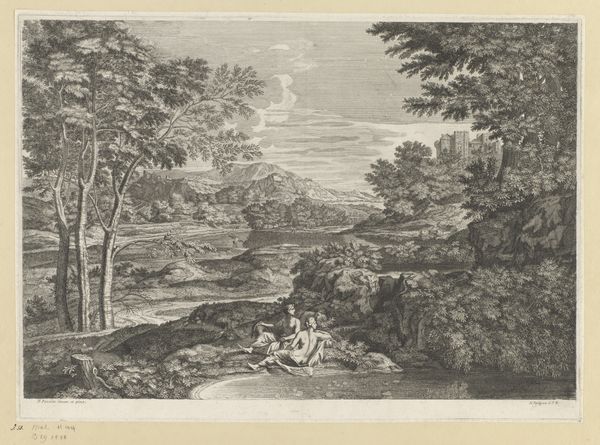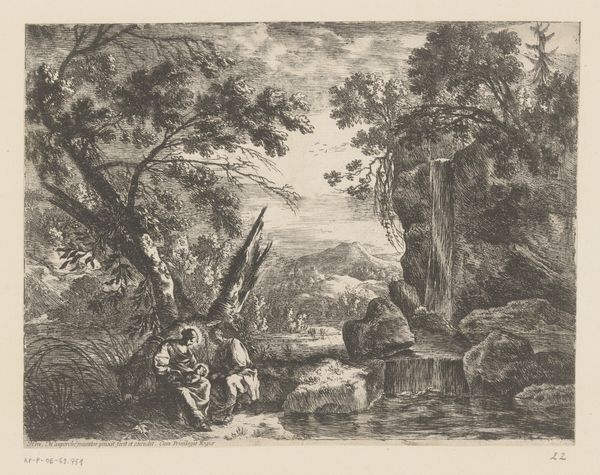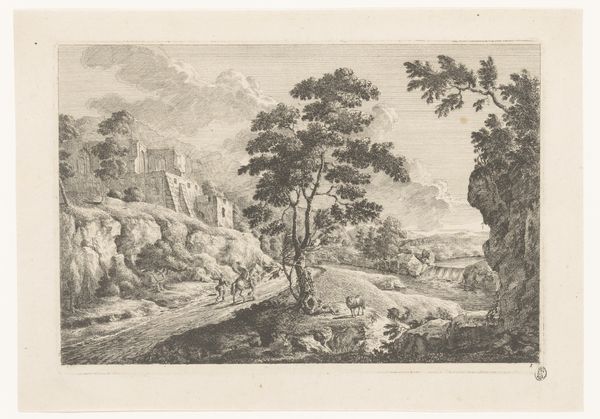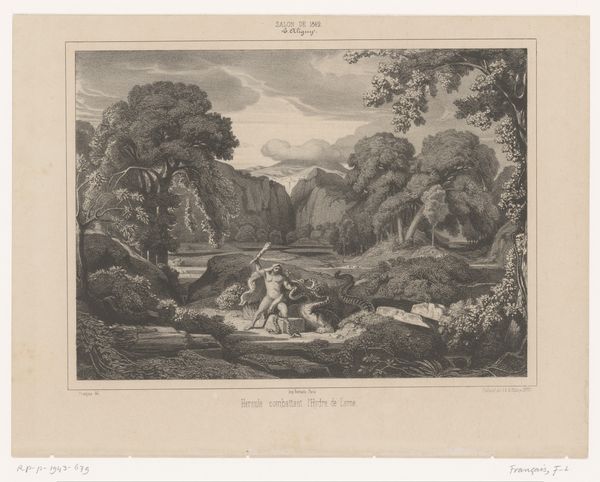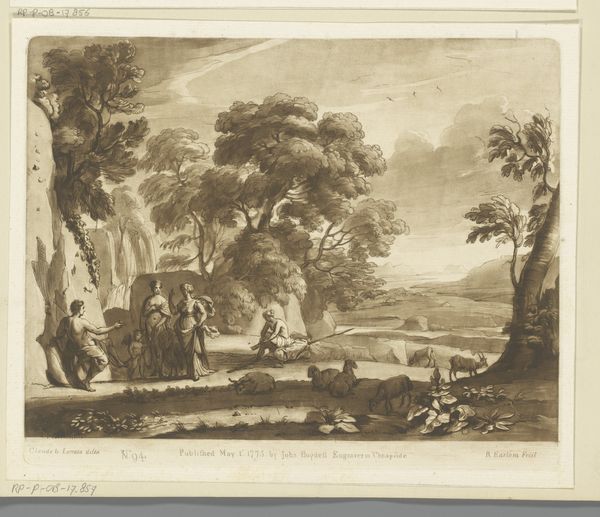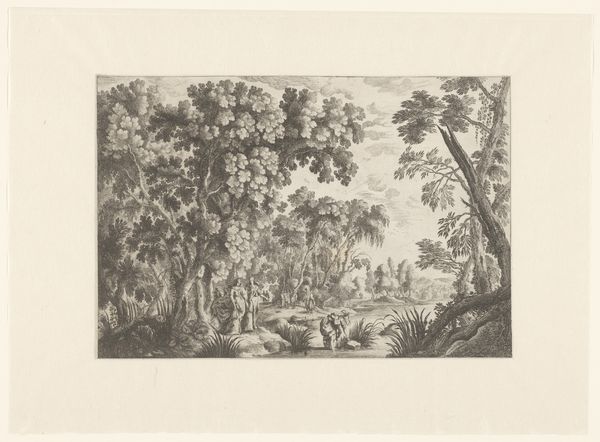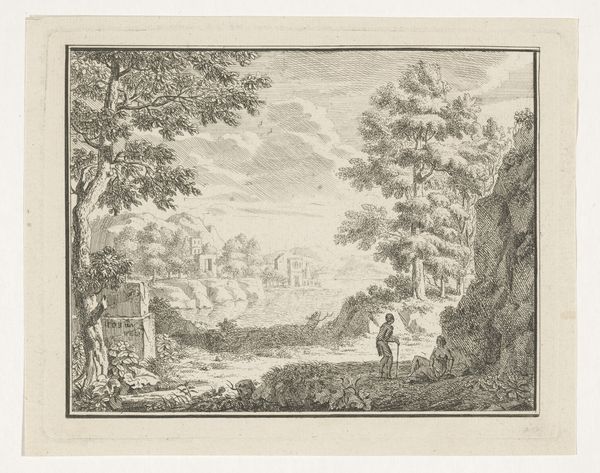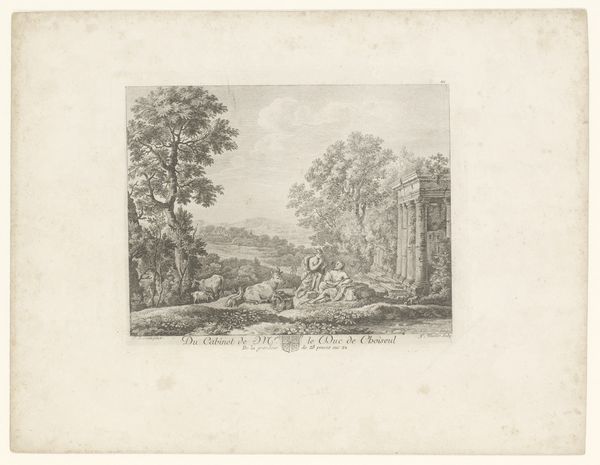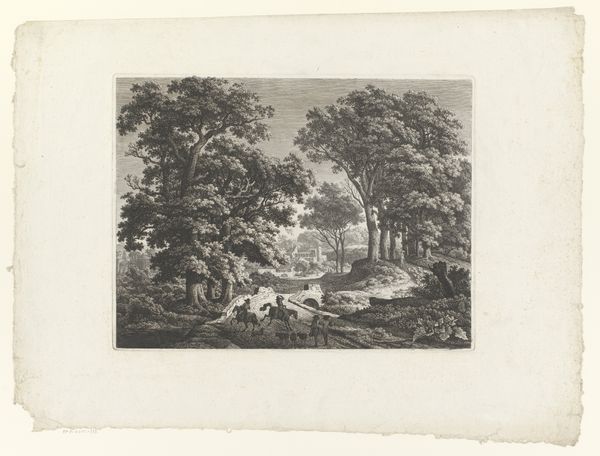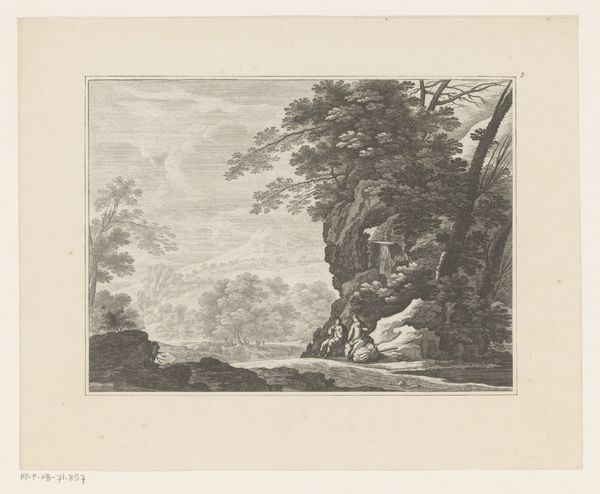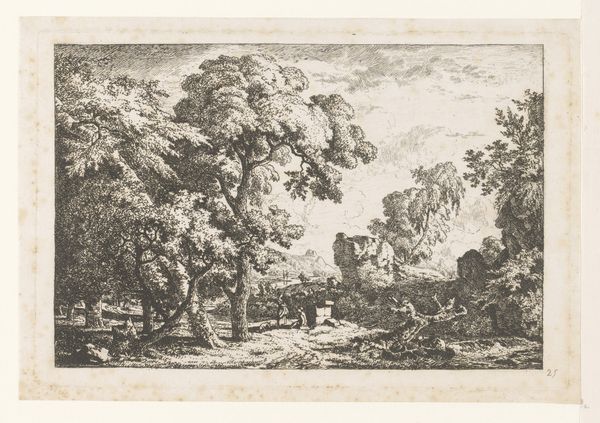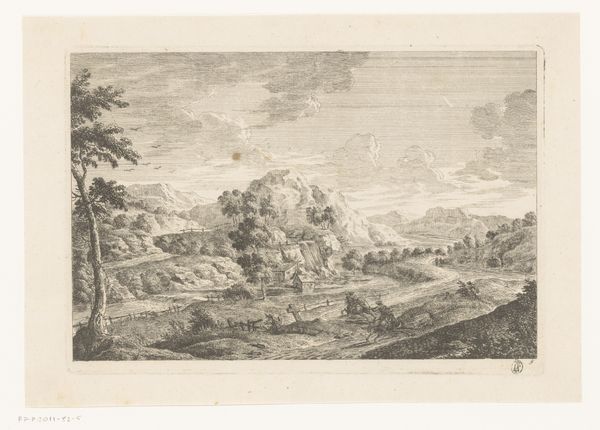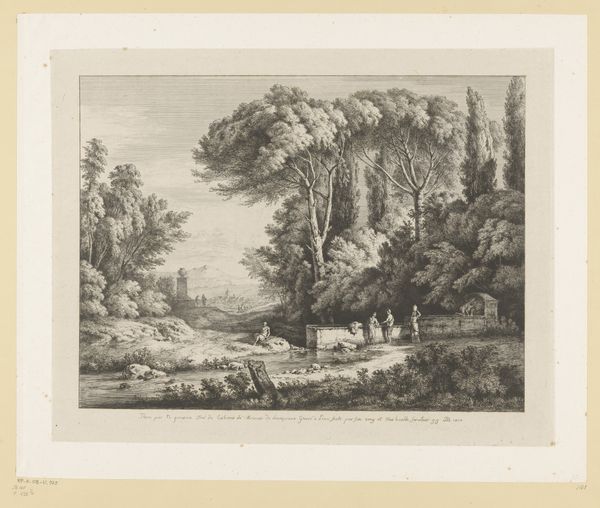
drawing, etching, watercolor, ink
#
drawing
#
water colours
#
baroque
#
etching
#
landscape
#
watercolor
#
ink
#
history-painting
#
watercolor
Dimensions: height 235 mm, width 369 mm
Copyright: Rijks Museum: Open Domain
Editor: This drawing, titled "Arcadian Landscape with a Scene of Sacrifice," created by Johannes Glauber after 1684, employs ink, watercolor and etching. The light washes create a tranquil atmosphere, yet the details of the sacrificial scene also strike me as quite intense. What do you see in this piece, from your perspective? Curator: I'm immediately drawn to the etching lines themselves. How the artist meticulously constructed the image through the physical act of engraving. Consider the division of labor implicit here. Glauber may not have prepared his own inks. How do these social dynamics contribute to the final artifact? The 'Arcadian' ideal celebrated was supported, always, by resources and hands besides the named author of the image. Editor: So, you are saying the physical production shaped our experience with it? Curator: Absolutely. The 'landscape' genre itself reflects a specific mode of production: the leisure to observe, sketch, and then reproduce the image, often for consumption by an elite audience. The act of sacrificing—we see the smoke, yes? What fuelled that fire, who gathered the materials, and how does that process influence our reading of the scene depicted? It's vital to consider these aspects when evaluating artwork. Editor: That's a way to look at art that I never thought about! I have always considered the artistic composition or subject, without factoring the materials and labor. Curator: The pigments used, the quality of paper: These material choices signal the artist's intended market and can inform us about the socio-economic conditions of artistic production. Editor: I see your point. By analyzing the resources needed to even create this piece we learn more about that time. It moves past aesthetics into cultural critique! Curator: Exactly! It offers us new perspectives on history painting and artistic intention, shifting the focus from romanticism towards the material realities of making and its relationship with the ruling classes.
Comments
No comments
Be the first to comment and join the conversation on the ultimate creative platform.
